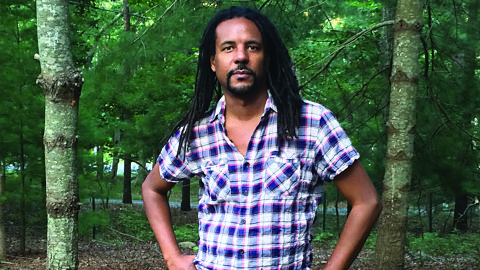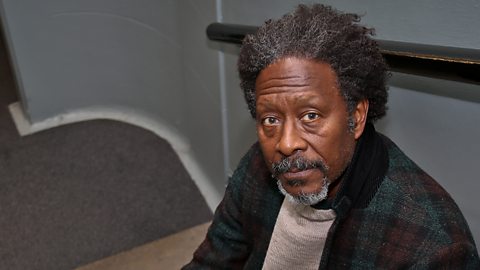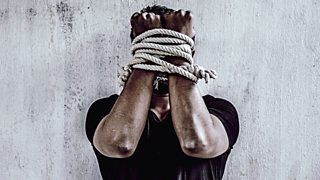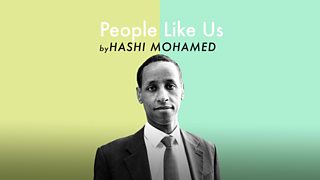The secret network that enabled thousands to escape from slavery
Colson Whitehead's brutal, brilliant, award-winning novel re-imagines the routes that American slaves took to freedom as a literal series of tracks, platforms and covert conductors.
As Radio 4 broadcasts of the fantastical novel, we take a look at the facts behind the fiction. What was the Underground Railroad?

What was the Underground Railroad
Unlike Colson Whitehead's literal network of tracks and trains, the Underground Railroad was actually a series of secret routes and safe houses that, by one estimation, enabled 100,000 enslaved people to escape to safety.
The Underground Railroad was a series of secret routes and safe houses that, by one estimation, enabled 100,000 enslaved people to escape to safety.
As opposition to slavery grew in the early 1800s, a vast network of sympathetic parties began to develop and organise. In most instances, slaves would flee from states in the south and head towards the free states in the north or to the safety of Canada. The Railroad was most active between 1810 and the commencement of the Civil War in 1862, though groups had been helping slaves to escape since the mid 1700s, with George Washington complaining that one of his runaway slaves had been assisted by “a society of Quakers, formed for such purposes.”

"It was a social network of people helping out"
Colson Whitehead on the history of the underground railroad.
The perils of being a Conductor
While this support system was vital to the security of those absconding, escapees had to rely on their own ingenuity and a great deal of luck to successfully flee. Getaways usually took place at night, with only the North Star for guidance. On occasion, former slaves would infiltrate a plantation and help to guide an individual or a group to a nearby safe spot at enormous personal danger to themselves.
It seems the right time to revisit these moments in history.Clarke Peters
Other members of the Underground Railroad also had to deal with their own distinct perils. Those living in the North convicted of helping slaves, could be fined hundreds or even thousands of dollars. If a Conductor was caught helping runaways in a Southern slave state, the consequences could be far more serious. Jail time was the best they could have hoped for, with lynchings at the hands of angry mobs a distinct possibility.
In areas sympathetic to abolition, the Railroad didn’t need to be quite so underground. Vigilance committees appeared in the North’s larger towns and cities such as New York, Philadelphia, and Boston, providing money, food and a safe place to sleep for former slaves trying to settle into the community.

鈥淚 felt my emotions get stuck in my throat and I could no longer narrate."
Clarke Peters explains how the book resonates with contemporary issues.
The elusiveness of freedom
Even in the Northern states, safety wasn’t guaranteed. In 1860, Lucy Bagbe is thought to be the final slave returned to bondage under the newly created Fugitive Slave Law that forced former slaves to return to their masters in an attempt to curb the Railroad’s activities. Lucy's former owner tracked her down to Ohio and, despite a court case and the intervention of abolitionists, was returned to her former indenture and only freed once abolition had been declared.
In fact, a reverse Underground Railroad also developed at this time, with slave owners tracking down escapees in the north, then kidnapping and smuggling them back to servitude via a series of sympathetic safe houses. Even free men and women could be taken and sold into slavery in the south.
The “Moses of her People”
Notable participants of the Underground Railroad included John Fairfield, the son of a slaveholding family who facilitated many escapes, Levi Coffin who led more than 3,000 slaves to freedom and, perhaps the most famous Conductor of all, Harriet Tubman (pictured above), a former slave who returned to the south on at least 19 occasions and helped over 300 fugitives flee to freedom. Described as the “Moses of Her People”, she wielded a shotgun for protection and to help change the minds of any escapees who got cold feet and wanted to turn back.
On 1 January, 1863 Abraham Lincoln issued the Emancipation Proclamation that changed the legal status of more than three million enslaved people in the South from “slave” to “free”. Once the Civil War ended, the 13th amendment to the Constitution, added in 1865, abolished slavery throughout the entire United States. Finally the horror of slavery was at an end and the activities of the Underground Railroad were complete.
Listen to Colson Whitehead's Pulitzer Prize-winning novel, which re-imagines the Underground Railroad as a literal network of tunnels and subterranean tracks. Read by Clarke Peters.

-
![]()
The Underground Railroad
Colson Whitehead's Pulitzer Prize-winning novel about slavery in America.
-
![]()
The underground music of the Black Power movement of 1960s and 70s.
-
![]()
Finding Freedom: The Fight Against Modern Slavery
Are victims of modern slavery and trafficking being let down? File on 4 investigates.
-
![]()
People Like Us by Hashi Mohamed
Hashi Mohamed reads from his book People Like Us, an exploration of social mobility.




